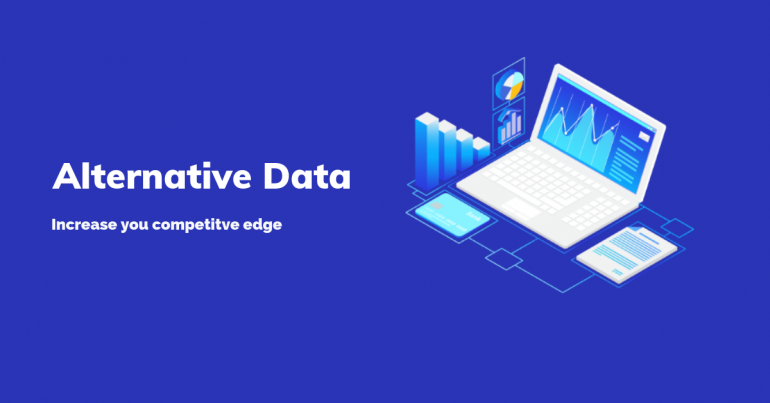One of the key factors in the data revolution of the 21st century was the rise of alternative data. This refers to the gradual incorporation of alternative data sources into business and investment decision-making and general workflow. As this incorporation is accelerating, the importance of alternative data services is also growing constantly. These are the services that ensure that the data is prepared and utilized so that maximum business value is extracted from it.
New sources – more data
The main recurring theme of the last decade in business was the rising value of data and data services. This has been determined by the fact that production of data has radically increased with the increase of smart devices capable of recording and sharing information.
Additionally, businesses have found ways to utilize these new data sources for various purposes. If previously both the data produced in general and the data used in business have been limited to industry and government sources, these limits have been overcome today.
Companies are now using more varied firmographics as well as all data that is accessible online and that comes from various sensory devices. All this leads to a world in which almost anything can become a data source, and the information valuable for businesses is produced in incomprehensible volumes.
Alternative data services: things worth knowing
Knowing what alternative data is already allowed to understand the basics about alternative data services. Generally, these are the services that allow handling the massive growth in data usage that came with the new data sources.
Here are eight more things worth knowing that will help to understand alternative data services better.
1) A lot of alternative data is coming from online sources. Thus, an important place among alternative data services is held by web scraping. This is the procedure of extracting information available on the internet and gathering it in databases for future use.
2) A step beyond web scraping is web data integration, which allows us to further manage the data from online sources. Web data integration is the process of aggregating, cleaning, and unifying data from different sources into a single format to make it more accessible and easier to use.
3) Data itself comes as a service as part of the “as a service” technology enabled by cloud computing. Data as a service, or DaaS for short, allows getting alternative data on demand without storing it on the company’s databases.
4) Software capable of handling big data is also accessible on-demand these days. Referred to as big data as a service or BDaaS, it enables companies to get both alternative data and tools for data analytics on demand.
5) Data interpretation is an important service offered by many reputable alternative data service providers. This process involves a few steps, from establishing goals to reflecting on the results, which are meant to turn raw data into actual insights.
6) Another important procedure that anyone aiming to utilize alternative data should know about is data wrangling. Also known as data munging, this is the procedure of cleaning and unifying the data into a singular problem meant for answering particular predefined questions. Unfortunately, most of the time of data analysts are dedicated to data wrangling.
7) Businesses utilize alternative data for various benefits ranging from competitive advantage to lead generation, managerial decisions, and beyond. Additionally, investors leverage alternative data with traditional for better insights and investing models. Alternative data services are what helps in these tasks, preparing data in a necessary way for particular value extraction.
8) Data quality is absolutely central to alternative data services. Many of these services are either all about providing high-quality data or raising the quality of data already possessed. Thus, alternative data services, like all other kinds of services at the end of the day come down to quality.
Data and AI technology
It is expected that the global alternative data market size will reach USD 11.1 billion by 2026. This manifests the rapid growth of the usage and role of alternative data services in the coming years.
A less obvious effect of this growth is likely to be the boosted development of artificial intelligence. Since AI is used extensively for better alternative data services, businesses are very much interested and invested in the speedy progress of this field.
AI tools provide an opportunity to handle more data in less time, thus improving the workflow at every department where large volumes of data are used. Furthermore, such AI features as machine learning improve the forecasting capabilities of algorithms which is extremely valuable for investors.
This all leads to the general societal benefit of the alternative data services – helping to improve the AI technology. The better this technology gets the more applications that benefit our daily lives will appear.

Introvert. Proud beer specialist. Coffee geek. Typical thinker. Pop culture trailblazer. Music practitioner. Explorer.





